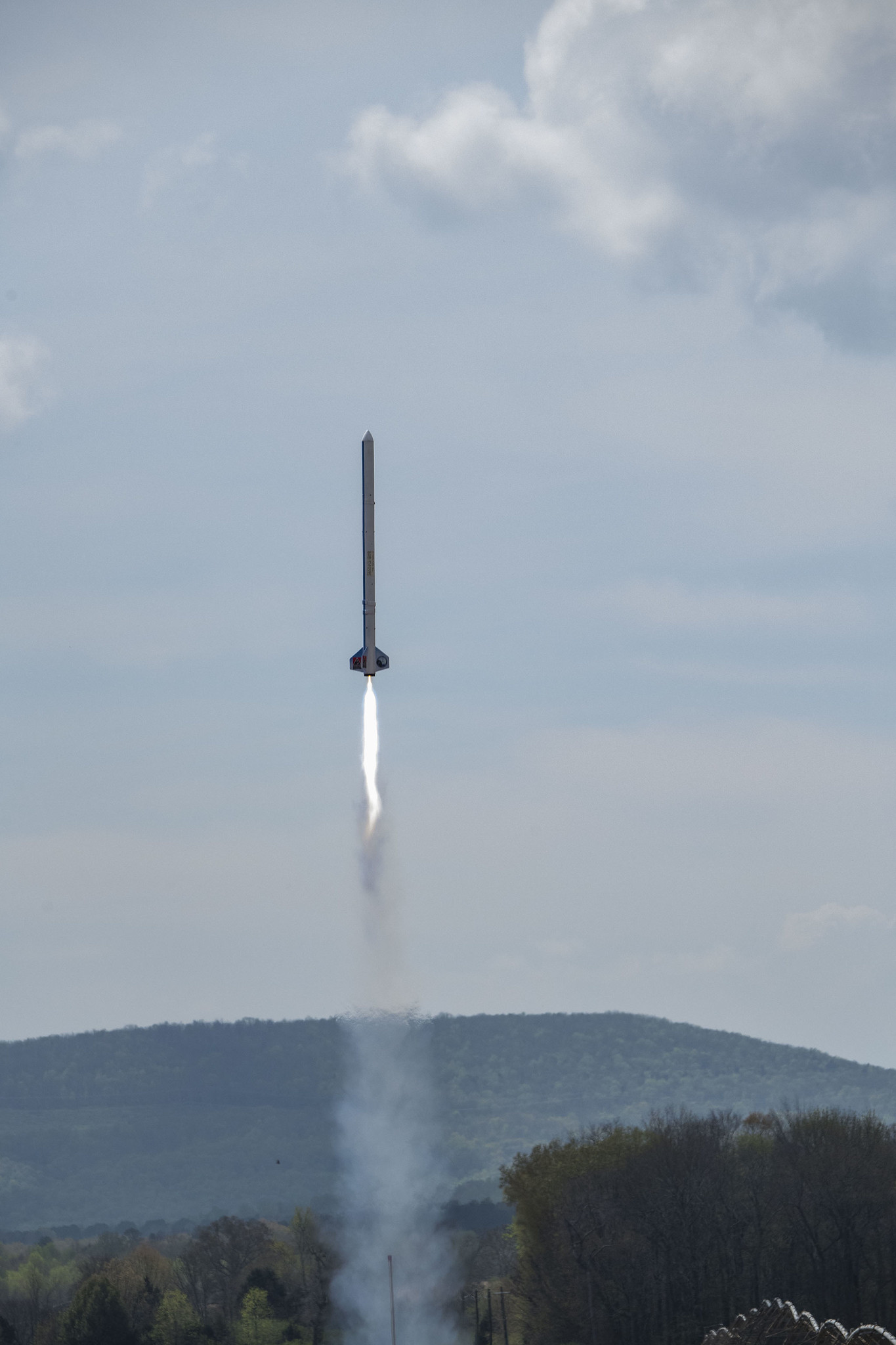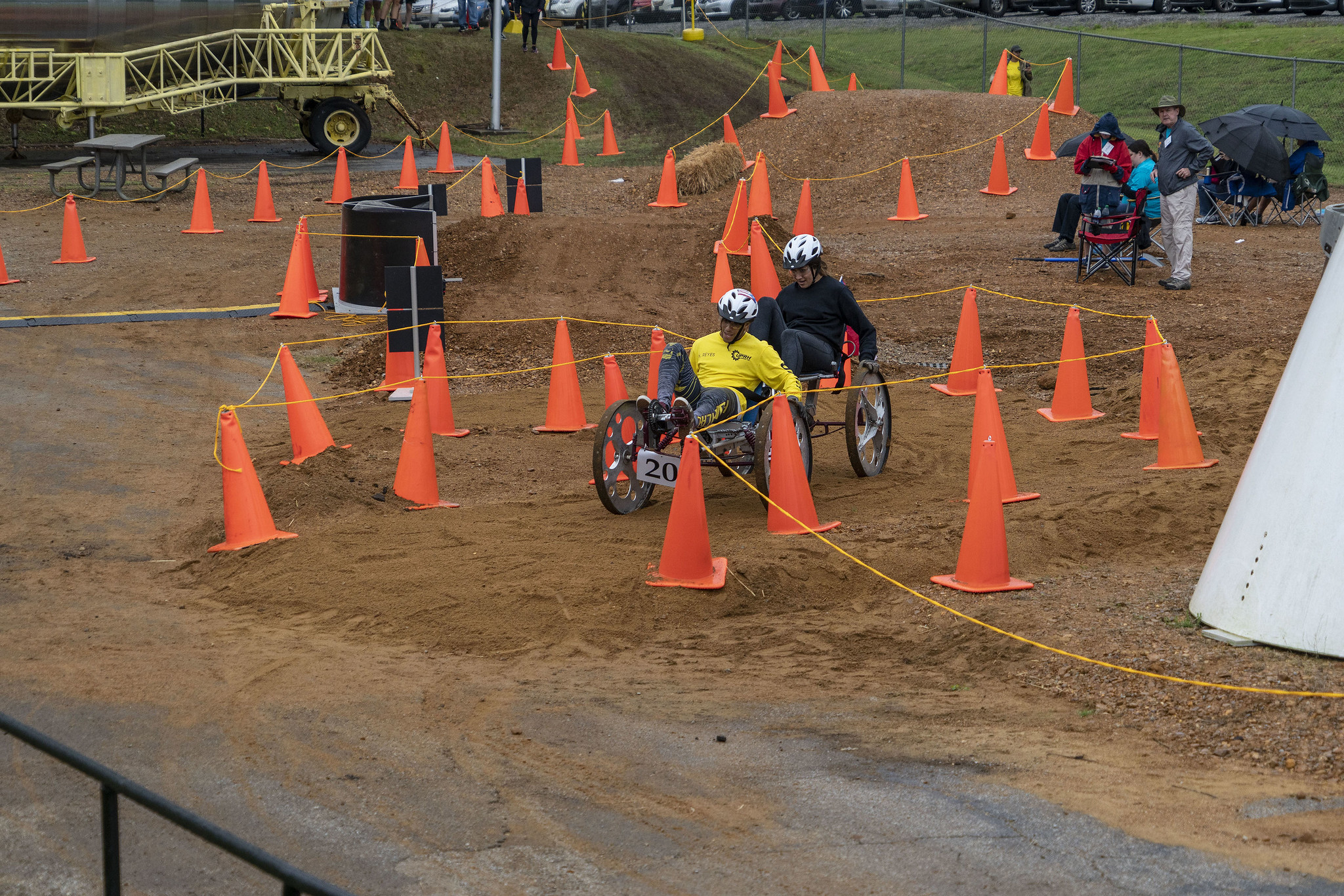In This Week’s Star
- Marshall Moved to Mandatory Telework in Response to COVID-19
- Marshall STEM Events Undergo Changes Due to Coronavirus Precautions
- Bennu’s Boulders Shine as Beacons for NASA’s OSIRIS-REx
- Payload and Missions Operations Division Certifies New Directors
- NASA Competition Winners Form Small Business to Launch CubeSats into Deep Space
- NASA, SpaceX Commercial Crew Rocket Teams Meet at Marshall
- Researcher Thomas Meek Presents Microwave Sintering at Tech Talk
- This Week in NASA History: STS-119 Launches to Space Station – March 15, 2009
Marshall Moved to Mandatory Telework in Response to COVID-19
In an effort to limit the spread of COVID-19, NASA’s Marshall Space Flight Center moved to a mandatory telework status March 13.
On March 17, all NASA centers and facilities were elevated to Stage 3 of NASA’s Response Framework — which requires all employees who are able to telework to do so until further notice. Access to the centers and facilities is restricted to mission-essential personnel – those who are required to perform their work on key mission functions or to safeguard security and property.
Marshall leadership encourages all team members to take extra precautions to protect themselves and others, and to follow guidance from the Centers for Disease Control and Prevention and the agency’s chief health and medical officer, Dr. JD Polk. Questions should be directed to employees’ respective supervisors.
“The protection and care of the Marshall family, and their families, and the entire Marshall community is our top priority and critical to the success of our mission,” Marshall Director Jody Singer said. “I urge you to take care of your health and that of your family. We must all do our part to try to prevent the spread of this virus among our community and our workforce. “
Exchange partners and other Marshall facilities — including the cafeteria, Space Shop, food truck corral, wellness center and Marshall Child Development Center — are currently closed.
If employees need to access the center to retrieve laptops or other equipment or belongings, they must contact their supervisor and gain management approval.
Team members experiencing technical difficulties should contact the Enterprise Service Desk Online at https://esd.nasa.gov/esdportal or call 1-877-677-2123 — Option 2 — for troubleshooting and service. The End User Services Office SpaceBar in the basement of Building 4200 will be available to help resolve issues that cannot be resolved remotely.
If employees have mission-critical travel objectives that cannot be accomplished virtually, they should complete the Travel Exception Form and obtain approval from their organization director or program office.
The Marshall Employee Assistance Program is available via telephone consultation for team members in need of support during this time. Terry Sterry, Marshall Employee Assistance Program coordinator, posted several tips on managing stress and anxiety on ExplorNet. He advises employees to stay aware, use reliable sources for information, engage with support systems, develop action plans, focus on facts and seek out help if things become overwhelming.
“These steps are allowing us to protect the health of our workforce while continuing our mission,” NASA Administrator Jim Bridenstine said. “It is essential that you stay in frequent contact with your supervisor as we telework. This unprecedented situation for our agency will present challenges, but I am confident we have the right plans in place to successfully see the agency through this national emergency.”
Team members should monitor NASAPeople and Inside Marshall for updated guidance as the situation develops.
Marshall STEM Events Undergo Changes Due to Coronavirus Precautions
Each year, students from around the world travel to Huntsville to celebrate more than seven months of designing, building and testing their creations for NASA’s Student Launch, NASA’s Human Exploration Rover Challenge and the FIRST Robotics competitions. This year, in order to protect the students, volunteers, workers and partners of these events during the COVID-19 pandemic, changes have been implemented.
Student Launch has cancelled on-site activities in Huntsville, which were scheduled for April 2-4. In place of launching in North Alabama, teams will launch on their home fields and send verification data to the NASA program team. The college and university teams that must complete the payload challenge will receive samples, and then record a video of their payload attempting the task.
All Student Launch teams will submit a Post Launch Assessment Review as their final step. Following review of the reports, NASA’s Student Launch program will select the winning teams, then announce the winners during a virtual awards ceremony to be held in the summer. More details can be found here.
The Human Exploration Rover Challenge, which was scheduled for April 17-18 at the U.S. Space & Rocket Center, has cancelled on-site activities. In lieu of activities in Huntsville, the program team will host a virtual awards ceremony in early May to celebrate and recognize the hard work that teams have already completed. More details can be found here.
For more information about the engineering challenges that NASA hosts, visit here.
The Rocket City Regional of the FIRST Robotics competition, which was scheduled for April 1-4 at the Von Braun Center, has been cancelled. Marshall is a partner in the event, which is the culmination of six weeks of work during which teams of high school students build, program and test a functional robot.
Bennu’s Boulders Shine as Beacons for NASA’s OSIRIS-REx
By Brittany Enos
This summer, the OSIRIS-REx spacecraft will undertake NASA’s first-ever attempt to touch the surface of an asteroid, collect a sample of it and safely depart. But since the craft’s arrival at asteroid Bennu in 2019, the mission team has been tackling an unexpected challenge: how to accomplish this feat at an asteroid whose surface is blanketed in building-sized boulders.
To conduct the touch-and-go sample collection activity, the OSIRIS-REx team originally had planned to use a LIDAR system — similar to radar, measuring distance via laser pulses — to navigate to Bennu’s surface during sample collection.
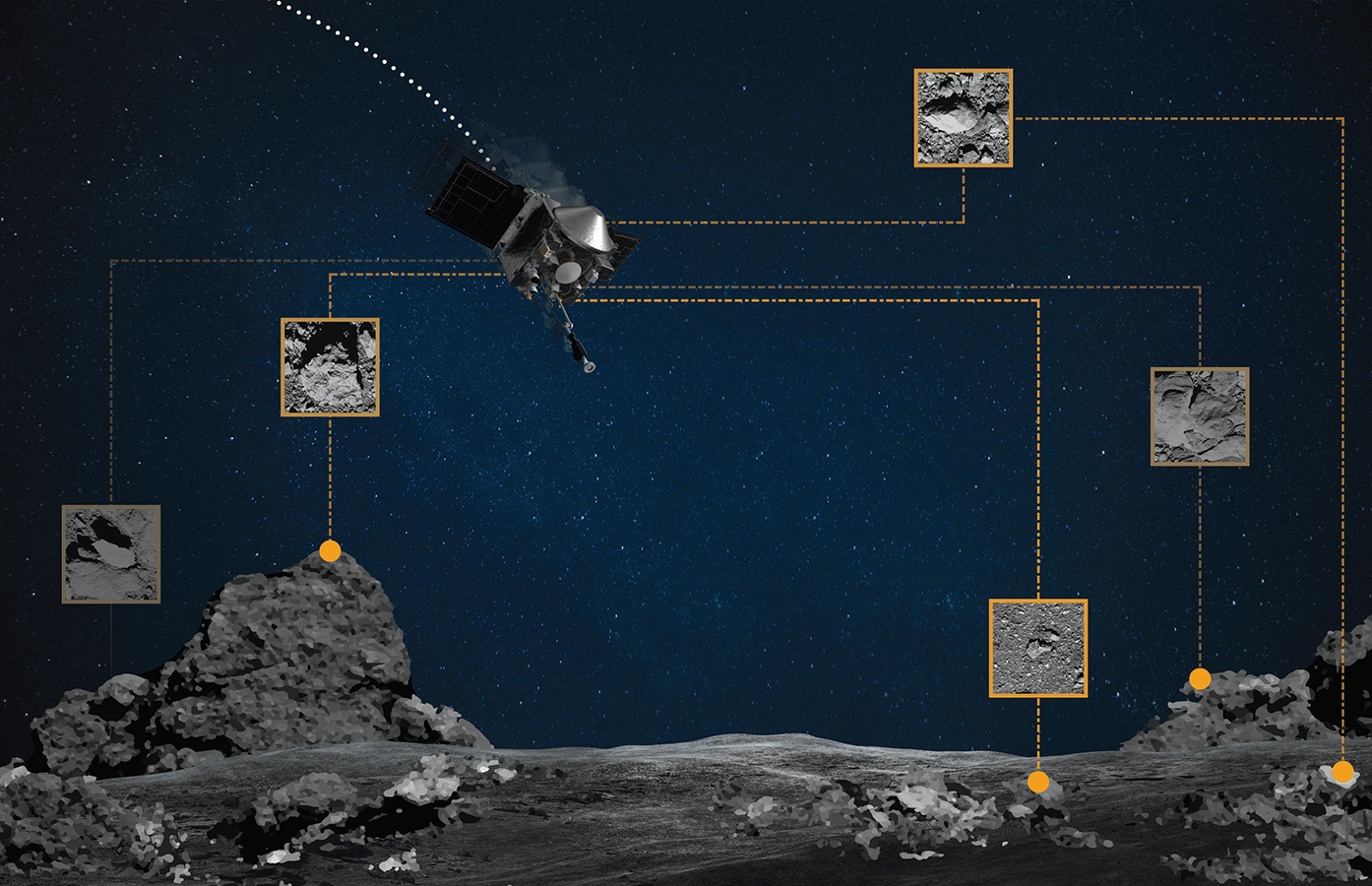
That system, however, required a touchdown site at least 164 feet in diameter. The largest safe area on Bennu is just 52 feet wide — roughly 10% of the estimated safe area. The team realized they needed a more precise navigation technique enabling the spacecraft to accurately target very small sites while dodging potential hazards.
Now, using the asteroid’s hazardous boulders as signposts, the mission team has developed a new precision navigation method to overcome the challenge. It’s known as “natural feature tracking,” and provides more extensive navigation capabilities than LIDAR.
The technique is key to executing what the team is calling its “Bullseye Touch-and-Go” sample collection maneuver, an optical navigation technique that will safely deliver the spacecraft to the much smaller sampling area.
It requires the creation of a high-resolution image catalog aboard OSIRIS-REx. Earlier this year, the spacecraft made reconnaissance passes over the mission’s primary and backup sample collection sites, designated Nightingale and Osprey, respectively. OSIRIS-REx flew within .04 miles of the surface, collecting images from different angles and lighting conditions to build an image catalog, which the team will upload to the spacecraft before the sample collection event to identify boulders and craters unique to the sample site region. The system will autonomously guide OSIRIS-REx to Bennu’s surface by comparing the onboard image catalog with real-time images taken during descent. As it descends, the system will update its predicted contact point depending on the spacecraft’s position in relation to the landmarks.
During descent, if OSIRIS-REx predicts it will touch unsafe terrain, it will autonomously wave off the attempt and back away from the surface. However, if it sees that the area is free of hazards, it will continue to descend and attempt to collect a sample.
OSIRIS-REx is part of NASA’s New Frontiers Program, which is managed by NASA’s Marshall Space Flight Center for the agency’s Science Mission Directorate. NASA’s Goddard Space Flight Center provides overall NASA mission management, systems engineering and safety and mission assurance for OSIRIS-REx. The University of Arizona in Tucson leads the science team, with professor Dante Lauretta as the principal investigator. Lockheed Martin Space in Denver built the spacecraft and provides flight operations. Goddard and KinetX Aerospace of Tempe, Arizona, are responsible for spacecraft navigation.
In April, the mission team will conduct the spacecraft’s first sample collection rehearsal. A second rehearsal is planned for June. OSIRIS-REx’s first real-time collection attempt is set for late August. The spacecraft will depart Bennu in 2021 and deliver the sample to Earth in 2023.
Enos is the digital communications lead for OSIRIS-REx at the University of Arizona’s Lunar & Planetary Laboratory.
Payload and Missions Operations Division Certifies New Directors
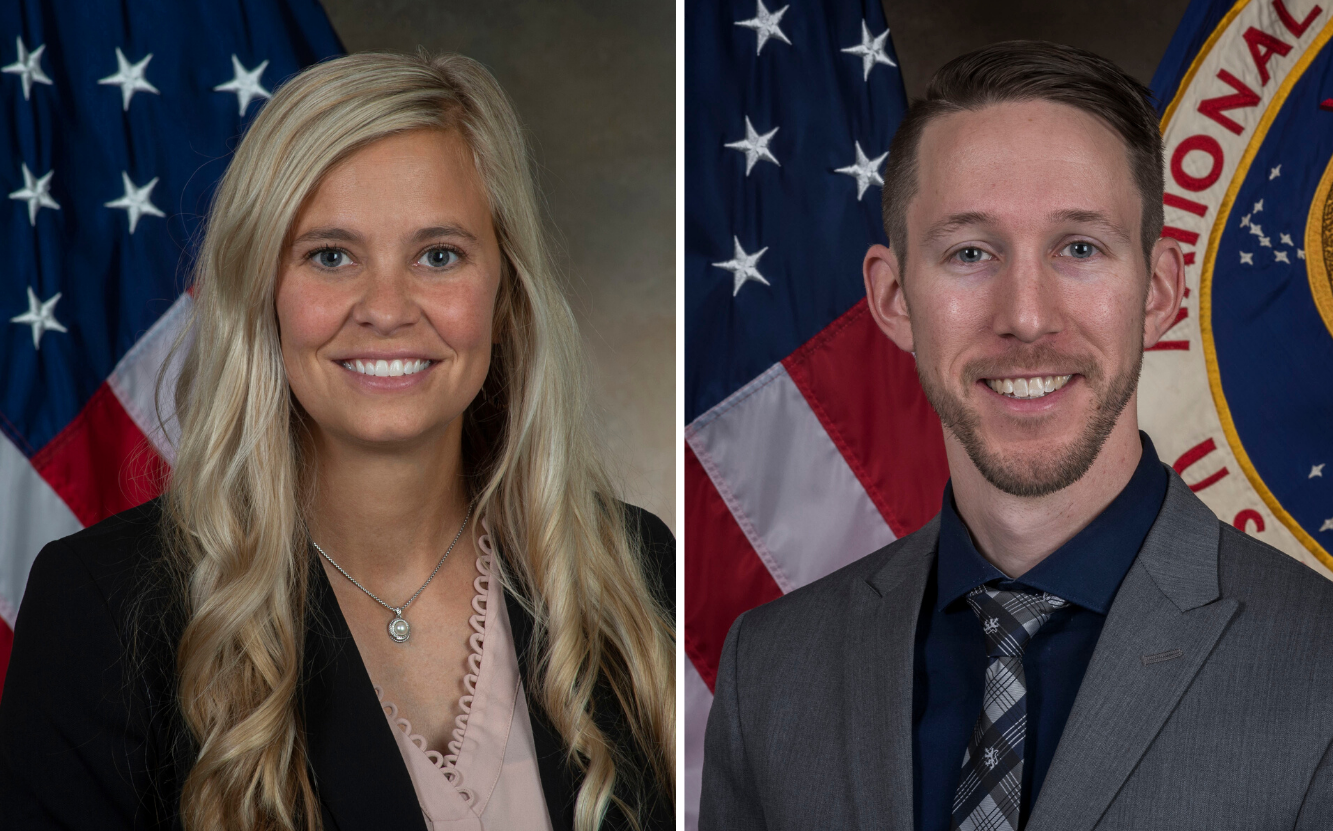
Jennifer McMillian, left, and Ian Howley are the latest payload operations directors certified by the Payload and Mission Operations Division at NASA’s Marshall Space Flight Center. Payload operations directors are real-time flight controllers for the International Space Station. They manage and direct the 24/7 operations of scientific payloads aboard the space station from the Payload Operations Integration Center at Marshall. The payload operations director is the single point of authority to the space station flight director at NASA’s Johnson Space Center for all of NASA’s payload operations. (NASA)
NASA Competition Winners Form Small Business to Launch CubeSats into Deep Space
Explore more about this NASA competition: https://www.nasa.gov/cubequest Credits: NASA
After meeting each other at an expo in Florida, these technology innovators came together to form Team Miles as a privately owned corporation to compete in NASA’s Cube Quest Centennial Challenge. The innovative, ionic plasma propulsion technology they developed will fly to deep space on Artemis I, the first integrated test flight of NASA’s Space Launch System and Orion spacecraft. Once in space, Team Miles’ goal is to win the Deep Space Derby, a segment in the final phase of the Cube Quest Challenge. To win, teams must demonstrate communications capabilities from a range of at least 4 million kilometers from Earth – more than 10 times the distance to the Moon. Explore more about this NASA competition: https://www.nasa.gov/cubequest. NASA’s Centennial Challenges Program is managed at the agency’s Marshall Space Flight Center.
NASA, SpaceX Commercial Crew Rocket Teams Meet at Marshall
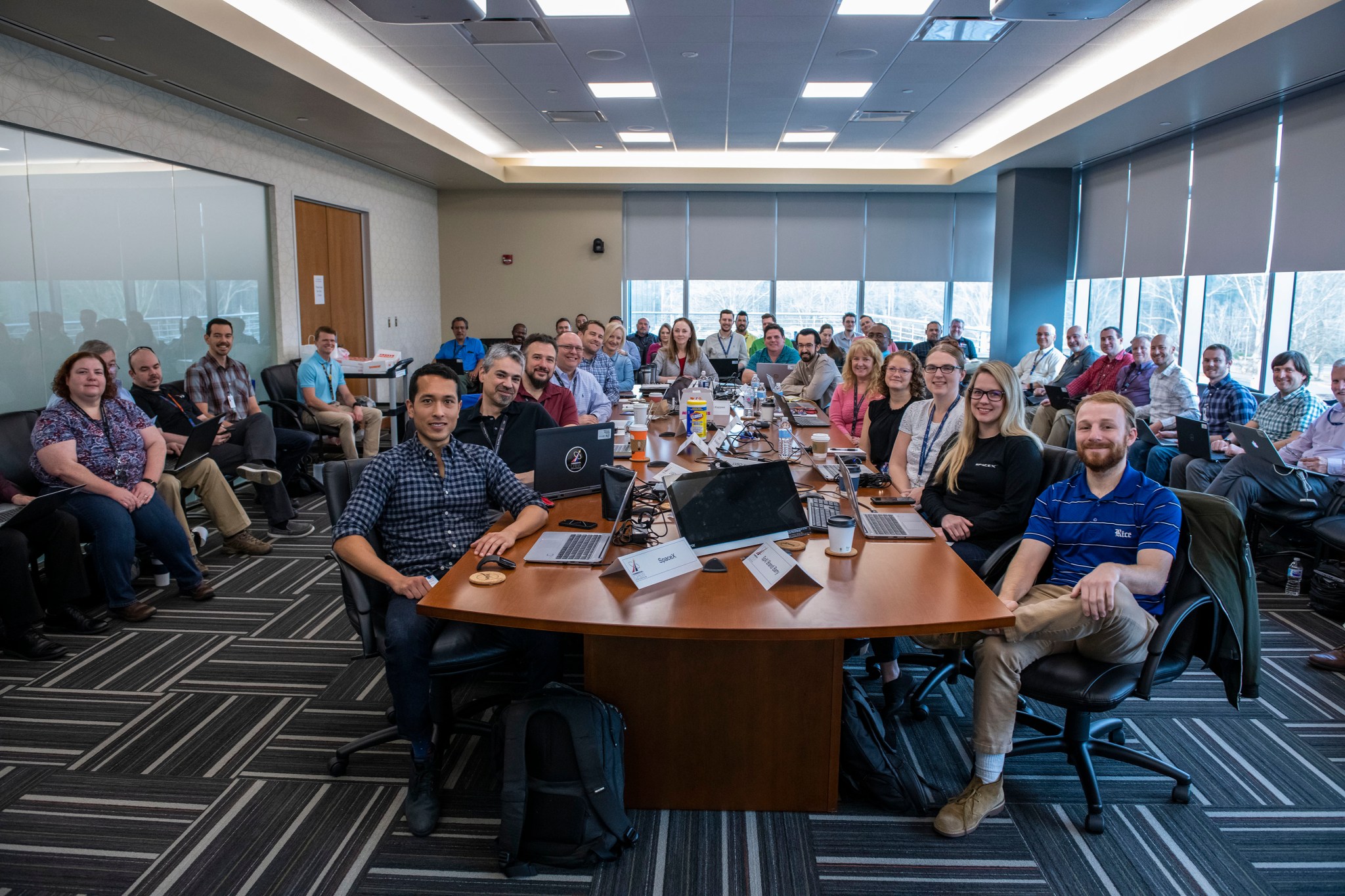
The Commercial Crew Program rocket teams from NASA’s Kennedy Space Center and NASA’s Marshall Space Flight Center meet with the SpaceX team March 11 at Marshall for technical discussions ahead of crewed flight missions. The teams met for two days. About 350 NASA employees and contractors work in the Commercial Crew Program, which is primarily based at Kennedy. Almost half the program workforce is located at other NASA centers, including Marshall and Johnson Space Center. For more information about the Commercial Crew Program, visit here. (NASA/Fred Deaton)
Researcher Thomas Meek Presents Microwave Sintering at Tech Talk
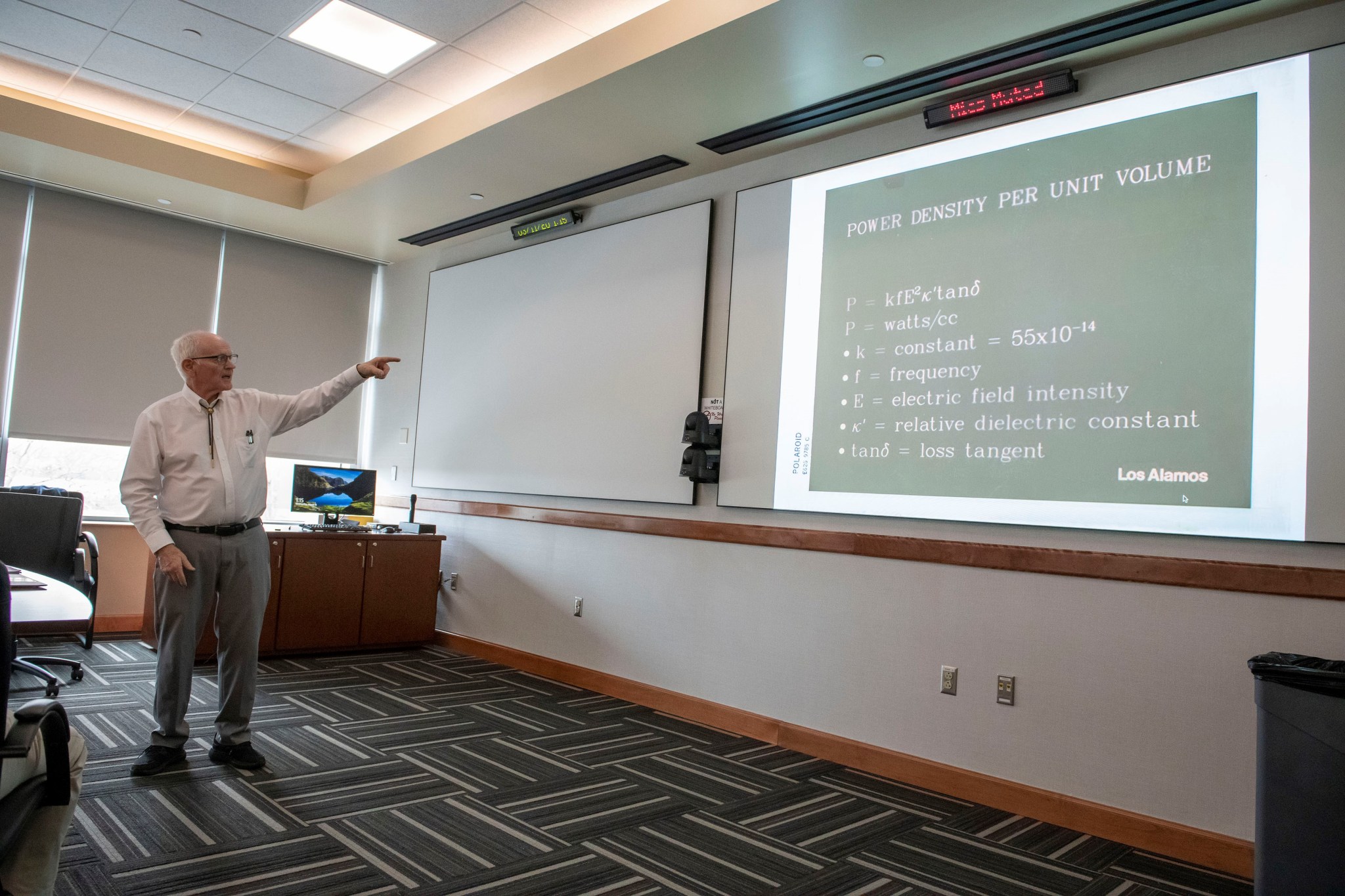
Thomas Meek, a researcher at The Crown College in Powell, Tennessee, presents his work on microwave sintering — heating a powder to solidify it without melting it — lunar samples and lunar simulants at a Tech Talk on March 11 at NASA’s Marshall Space Flight Center. Meek started working with NASA while at Los Alamos National Laboratory in New Mexico. His research has potential applications for lunar exploration under the Artemis Program for areas on the Moon that need to be transformed from a powder into a solid surface. The Tech Talk series is presented by the Marshall Center Chief Technologist’s Office. (NASA/Fred Deaton)
This Week in NASA History: STS-119 Launches to Space Station – March 15, 2009
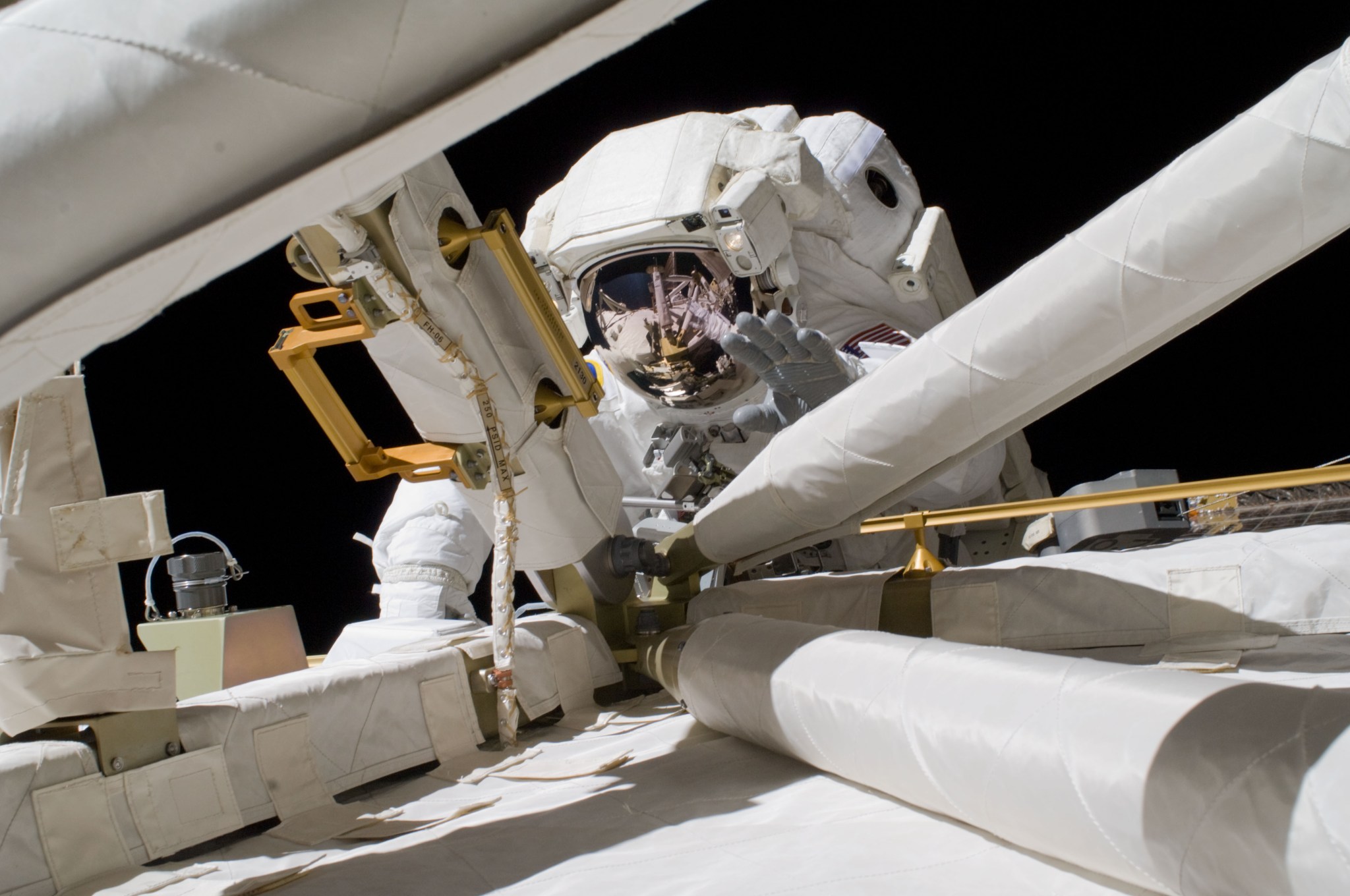
This week in 2009, space shuttle Discovery, mission STS-119, launched from NASA’s Kennedy Space Center on the 28th shuttle mission to the International Space Station. Discovery carried the S6 truss segment to the orbiting outpost. Here, astronaut Richard Arnold, STS-119 mission specialist, participates in the mission’s first spacewalk during construction and maintenance of the station. During the six-hour, seven-minute spacewalk, Arnold and astronaut Steve Swanson connected bolts to permanently attach the S6 truss segment to S5. Today, the Payload Operations Integration Center at NASA’s Marshall Space Flight Center serves as “science central” for the International Space Station, working 24/7, 365 days a year in support of the orbiting laboratory’s science experiments. After 20 years of continuous human presence, the space station remains the sole space-based proving ground and stepping stone toward achieving the goals of the Artemis Program. The NASA History Program is responsible for generating, disseminating and preserving NASA’s remarkable history and providing a comprehensive understanding of the institutional, cultural, social, political, economic, technological and scientific aspects of NASA’s activities in aeronautics and space. For more pictures like this one and to connect to NASA’s history, visit the Marshall History Program’s webpage. (NASA)



























